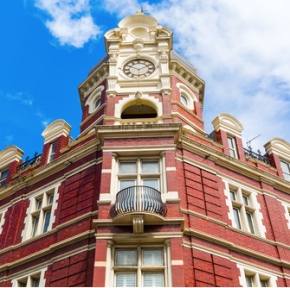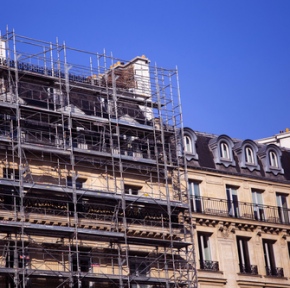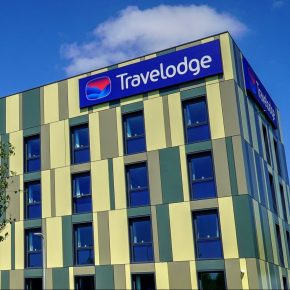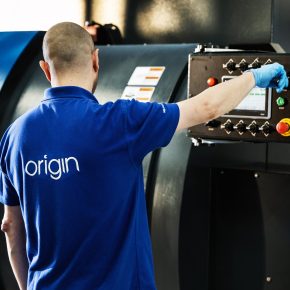
5 reasons we should restore historical buildings
The importance of restoring historical and heritage buildings is something that can often end up being overlooked. Nowadays, there are so many of these buildings and structures which need restoration, so how do we choose which buildings to prioritise and focus on above others?
Every historical building has its own completely unique set of reasons that make it worth restoring, so it can understandably be tricky to decide which buildings to devote time, money and effort to, especially if budgets are limited or time is short.
In addition, restoring historical buildings and heritage sites is usually a long, drawn-out process. Because the majority of the buildings that need to be worked on are so delicate, even the simplest tasks can spell disaster if they aren’t carefully planned out and the work undertaken with extreme caution and attention to detail.
Therefore, it is absolutely vital to ensure that the right restoration technique is chosen, taking the requirements of the individual building into account.
1. Historical value
 Older buildings are one of the only tangible throwbacks that we have to the past and forgotten bygone eras. They have an intrinsic historical and educational value as we can learn so much from them, in terms of architecture, interior design and decoration, as well as past standards of living and the way of life of people from years gone by.
Older buildings are one of the only tangible throwbacks that we have to the past and forgotten bygone eras. They have an intrinsic historical and educational value as we can learn so much from them, in terms of architecture, interior design and decoration, as well as past standards of living and the way of life of people from years gone by.
In addition, buildings of a certain era are usually built with different or better quality materials than those more modern constructions which we build today. Usually found in pre-World War II buildings, at that time structures were built to last.
As a general rule, these types of buildings are sturdy, dependable and a much safer bet than their cheap, flimsy modern counterparts. Once properly restored, an older building is most likely going to be a better bet than a new build, especially if the renovation process is focused on sustainability for the future
2. Architectural importance
Most older buildings are jam-packed full of interesting and unique architecture and design ideas and styles. From the quirky charm of an uneven ceiling to the rustic appeal of exposed beams and an open fire, it is undeniable that old buildings have a character and personality all of their very own.
3. Old buildings boost business
Particularly notable or extravagant older buildings, when properly restored, can be a significant boost to business. In particular, the leisure and tourism industry is the one that is likely to stand to gain the most from a well-restored, attractive historical building.
Older buildings can be opened to the public or even repurposed into normal or living museums to boost tourism and provide educational value. Plus, this can also have a big impact on the growth of the local area’s economy over the long term.
A large number of contractors, builders and experts are needed first of all to carry out the necessary repairs and restoration, and then once the project has been completed tourism will continue the curve and further boost the local economy.
Plus, older buildings can also provide attractive surroundings for newer businesses to move into. An old building repurposed into an office or shop adds a touch of class and elegance from the get-go, giving existing buildings a new lease of life and allowing businesses to thrive.
4. Cultural significance
Old buildings are there to serve as a reminder of a town’s culture and interesting past. The very act of seeing a historic building is a visual reminder to the viewer of the area’s cultural heritage.
People can immediately witness history first-hand through the aesthetics and architecture of a particular building. The renovation of heritage buildings is essential to the permanent residence of history and culture in the nation’s psyche.
5. You only get one chance
If you choose not to restore a building and decide to demolish it instead, you are never entirely sure of what is being destroyed. Even the most innocuous looking building can be hiding a treasure trove of secret gems, from rare architectural details to a significant historical past.
In the UK, the very fact that more unusual and perhaps surprising buildings are being preserved and protected by inclusion on the listed buildings register only serves as a testament to that old saying that you should never judge a book by its cover.
As we all know, choosing the right method of restoration is absolutely essential to the eventual success of the renovation project further down the line.
There are many different building restoration techniques for experienced professionals to choose from, ranging from standard repairs to structure preservation to full restoration. Each has their benefits and drawbacks both in the long term and short term, and each will suit different buildings in varying ways depending on factors including usage, function, and physical condition.
Historical buildings are vital to the upkeep of the cultural significance of our country. It is, therefore, essential that we continue to devote time, money and resources to the restoration and renovation of these heritage buildings and structures. That will ensure that we can keep enjoying and learning from these buildings for many more years to come.
One comment on “5 reasons we should restore historical buildings”
Leave a Reply
You must be logged in to post a comment.
Latest news

20th November 2024
CUPA: CUPACLAD enhances hotel aesthetics with a creative natural slate façade
Situated at the northern edge of a newly developed retail park near Bristol, the Abbey Wood Travelodge was conceived as part of the company’s new Budget-Luxe line of hotels – it features CUPACLAD, from CUPA PIZARRAS.
Posted in Articles, Building Industry News, Building Products & Structures, Building Systems, Case Studies, Cladding, Concrete, Cement, Admixtures, Facades, Posts, Restoration & Refurbishment, Retrofit & Renovation, Walls
20th November 2024
Origin launches in-house powder coating facility
Origin’s latest investment is set to redefine industry standards as it launches its own in-house powder coating facility.
Posted in Aluminium Products, Articles, Building Industry News, Building Products & Structures, Building Systems, Doors, Glass, Glazing, Innovations & New Products, Paints, Coatings & Finishes, Restoration & Refurbishment, Retrofit & Renovation, Site Preparation, Windows
20th November 2024
C-TEC: Revolutionary CAST-PRO devices for Welsh care home
C-TEC’s revolutionary CAST-PRO integrated detection and alarm devices have been chosen for a highly-regarded care home in Wrexham.
Posted in Articles, Building Industry News, Building Products & Structures, Building Services, Case Studies, Facility Management & Building Services, Health & Safety, Information Technology, Innovations & New Products, Retrofit & Renovation, Security and Fire Protection
20th November 2024
Saniflo enables effective conversion of historic Sula Lightship into luxury accommodation
Saniflo has played a crucial role in converting the historic Sula Lightship into a unique, high-standard accommodation facility.
Posted in Articles, Bathrooms & Toilets, Bathrooms, Bedrooms & Washrooms, Building Industry News, Building Products & Structures, Building Services, Case Studies, Drainage, Drainage Services, Drainage, Guttering, Soffits & Fascias, Facility Management & Building Services, Interiors, Pipes, Pipes & Fittings, Plumbing, Restoration & Refurbishment, Retrofit & Renovation

Good informative blog. The most important reason to restore the Historic buildings is to upkeep the culture history